Contents
- 1 Must-Have Supplies for Sewing Beginners
- 2 Must-Have Sewing Supplies for Beginners
- 3 What Sewing Supplies Do I Need?
- 4 What Is A Good Sewing Machine For Beginners?
- 5 Sewing Machine Needles
- 6 Cutting Tools in Sewing
- 7 Fabric Scissors
- 8 Seam Ripper
- 9 Small Scissors for Snipping Threads
- 10 Rotary Cutter
- 11 Sewing Measuring Tools
- 12 Measuring Tape
- 13 Set-Healing Cutting Mat
- 14 Rotary Cutting Rulers
- 15 Ironing Stuff
- 16 An Iron
- 17 Ironing Board
- 18 Sewing Marking Tools
- 19 Other Sewing Notions
- 20 Needles
- 21 Straight Pins
- 22 Pin Cushion
- 23 Thread
- 24 Elastic Thread
- 25 Pattern Weights
- 26 Freezer Paper
- 27 Fabric
- 28 Fabric Glue
- 29 Conclusion
Must-Have Supplies for Sewing Beginners
What are some of the essential supplies for sewing beginners? When you are new to sewing (or even when you are an intermediate!), you can quickly become overwhelmed with all the sewing notions and items that you might need. Here is my basic list for sewing supplies needed for new hobbyist.
These are the basic supplies for those just starting out with sewing, which I put into these general categories: a sewing machine, thread, cutting tools, measuring tools, ironing items, pins and needles, marking tools … and, of course … fabric.

Must-Have Sewing Supplies for Beginners
This is another article in my basics of sewing series.
I had sewing lessons when I was a little girl from my aunt. She taught me to sew first by hand and then later with a machine. Her sewing room was the goddess universe of everything sewing: little scissors, buttons, needles, fabrics.
It wasn’t until years later, though, that I made my journey into sewing for real. Now that I am the “expert” (or at least, moderately good), I am often asked what supplies for sewing beginners I recommend. Here’s my list of must-haves!
My mother was a really good crafter as well, which included sewing and knitting. I remember sneaking into the big box of CRAFTING SUPPLIES that she had down in the basement.
What Sewing Supplies Do I Need?
But not everyone comes from a family that sews.
How much should you spend on supplies? What kind of supplies are good for the beginner? Should you buy a particular brand? I’ve come up with this tutorial on what kind of supplies you need to get your started. All of these supplies, with the exception of the sewing machine, should be in your sewing box.
What Is A Good Sewing Machine For Beginners?
Most people get tripped out with buying a sewing machine. I have — and I recommend — a Brother Sewing Machine. I find my machine is reasonably priced, easy to set up, and fully featured for most, if not every, single project you might want to do, with the exception of embroidery and quilting. But if you are at that stage, then you hardly need my recommendations for beginner tools! 🙂 However, I have used Singers and even kids machines. All of them work and will get the job done! (In fact, I do A LOT of sewing by hand — no better “machine” then you.)

Sewing Machine Needles
Another must-have, because your Needles.Will.Break. It’s a fact of sewing life. They go a long way, though, so they make a good investment. Hint: You need different needles for different fabrics. For most sewing projects, you can use a universal 80/12 needle. Always buy a Schmetz sewing needle! They are color-coded by project type.

Cutting Tools in Sewing
Fabric Scissors
Fabric scissors can be really expensive. You have versions all the way up to $100! I found that the $20-line dressmaker sheers work out pretty good, but I’ve also used the slightly cheaper fabric scissors just fine. What you really need is the bent handle, which makes cutting so much better. Once you are standing over your cutting mat, you’ll understand!

Seam Ripper
All people who love to sew are in the know that the best tool is a good seam ripper. I prefer the ergonomic seam ripper, but an inexpensive seam ripper will do you just fine. It’s nice to have a lot of backups. I misplace these quite frequently.

Small Scissors for Snipping Threads
Small scissors are great for those little detail projects, cutting threads while at the machine, or making small cuts (like darts) into fabrics. You can find them in all sorts of designs, including vintage-looking ones. But I prefer these foldable snipping scissors.
Rotary Cutter
A rotary cutter, self-healing mat, and ruler are essential tools for cutting fabrics, especially if you want straight fabric. If you get nothing else, get these three items. I use a plain, basic rotary cutter. You will also need rotary blade replacements. I recommend 45mm because it’s the standard size, and it’s comfortable. You can also get an ergonomic rotary cutter starter set.
Sewing Measuring Tools
Measuring Tape
You will need accurate measurements, so a few good measuring tapes are important. You can have the soft measuring tape version or the retractable measuring tape version. Both are fairly inexpensive. Just like seam rippers, you can never have enough of these babies.
Set-Healing Cutting Mat
Buy the biggest size that you can … you will thank me. Make sure to store it flat and don’t use it as a table topper … in other words, take care of it! Pretty much any mat will do, but Amazon recommends this self-healing cutting mat. It’s also pink, which is a nice bonus. Here is a larger (green) version.
Rotary Cutting Rulers
I love these rulers, and not just for sewing. They make every house project easier. You will want different ones just because they are so useful, but a basic one is good to start.
Ironing Stuff
An Iron
I didn’t know this when I first started out sewing (as an adult), but a steam iron makes you life so much easier! Irons are as unique as the person. The Maytag Steam Iron has great reviews with Wirecutter’s recommendation.
Ironing Board
A sturdy board is a must, with T-shaped legs and non-slip feet. I recommend one with an adjustable height feature. This ironing board has great features, with a cheaper ironing board version for the budget-minded. If you go for the higher-end model, make sure to change out that ugly avocado cover to something much cuter. Many peeps leave an iron and ironing board off their list, but they are important supplies for sewing beginners.
Sewing Marking Tools
Along with scissors and seam rippers, I am constantly misplacing my fabric markers. You will want different kinds for different colors — white obviously shows up better on darker fabric, and vice versa. You will want disappearing ink. The fabric pens are useful for things like buttonholes, and the fabric marking chalk is just all around useful.
Other Sewing Notions
Needles
Last but not least is a plain, basic needle. Just like their pinning counterparts, needles come in all sorts of shapes and sizes. For knits, try the ball-point needle version. This is probably the most simple of the supplies for sewing beginners.
Straight Pins
I used to think these pins were hat pins! You can get them in all sorts of funky colors. But, just like needles, you need pins for different fabrics. I really like the Dritz brand of pins. I highly recommend using different pin colors if you can to designate the different types of fabrics. If not, then use different pin cushions. For most fabrics, you can use the pearlized pins. You will need a ball-point pin for knits. See the different colors?
Pin Cushion
Pins and cushions go together like peas and carrots … or tomato and basil. I highly recommend using different pin cushions for different pin types. Pin cushions also come in all sorts of shapes and sizes. You can get a basic tomato pin cushion, which is the quintessential pin cushion, I think. You can also get super nifty wrist pin cushions … totally helpful!
Thread
Like needles, you need different threads for different projects. However, almost all of your projects for the sewing beginner is a small collection of general purpose threads. I recommend Gutermann or Coats & Clark threads for most of your sewing projects. I highly recommend getting many black & white spools.
Elastic Thread
I was always kind of intimidated by elastic thread until I started sewing with it. Super cool. I have an easier time hand sewing, but I know you can use your machine for it too (I have never tried, though). Also useful for all sorts of crafts, like making beaded bracelets and necklaces.
Pattern Weights
These weights are so much better than pinning your patterns to the fabric. I love them! I really like bean-bag looking pattern weights, but you can also get these glass pattern weights.
Freezer Paper
Patterns are so much easier transferred to freezer paper! It’s especially useful if you are making your own patterns from existing clothing, like I did here making jersey shorts from a man’s t-shirt.
Fabric
Fabrics galore! Amazon has a surprisingly nice variety of fabric, in everything from quilting squares, fat quarters, and more.
Fabric Glue
This stuff changed my life. “Real” sewers might turn their noses up to fabric glue, but why get out a needle and thread if you don’t have to? Here’s a multipack fabric glue for you.
Conclusion
This list is a basic list for the things you need to get started in sewing. You will need:
-
- Something to measure out your fabric and thread
- Something to cut your fabric and thread
- A way to iron your fabric
- Marking tools to transfer your pattern
- And a way to sew, such as with a sewing machine and/or needle
What other tools would you add to the list?

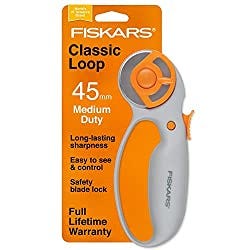



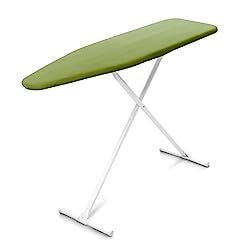
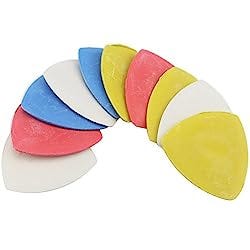


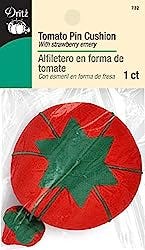
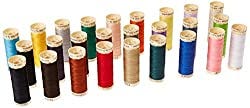
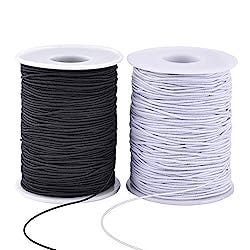

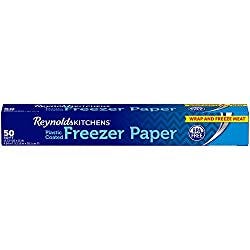
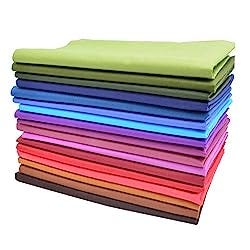
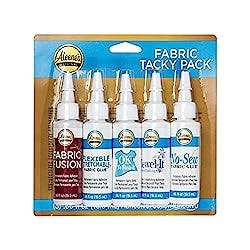










My mom used to love sewing back when we were kids. Unfortunately I didn’t pick that hobby from her.
My mom used to love sewing back when we were kids. Unfortunately I didn’t pick that hobby from her.
I used to sew and some of these items I never had. I missing sewing sometimes!
I used to sew and some of these items I never had. I missing sewing sometimes!
these are definitely essentials to making/sewing amazing items… I have almost all of them ; )
I’ll have to add elastic thread on my list soon! thanks!
these are definitely essentials to making/sewing amazing items… I have almost all of them ; )
I’ll have to add elastic thread on my list soon! thanks!